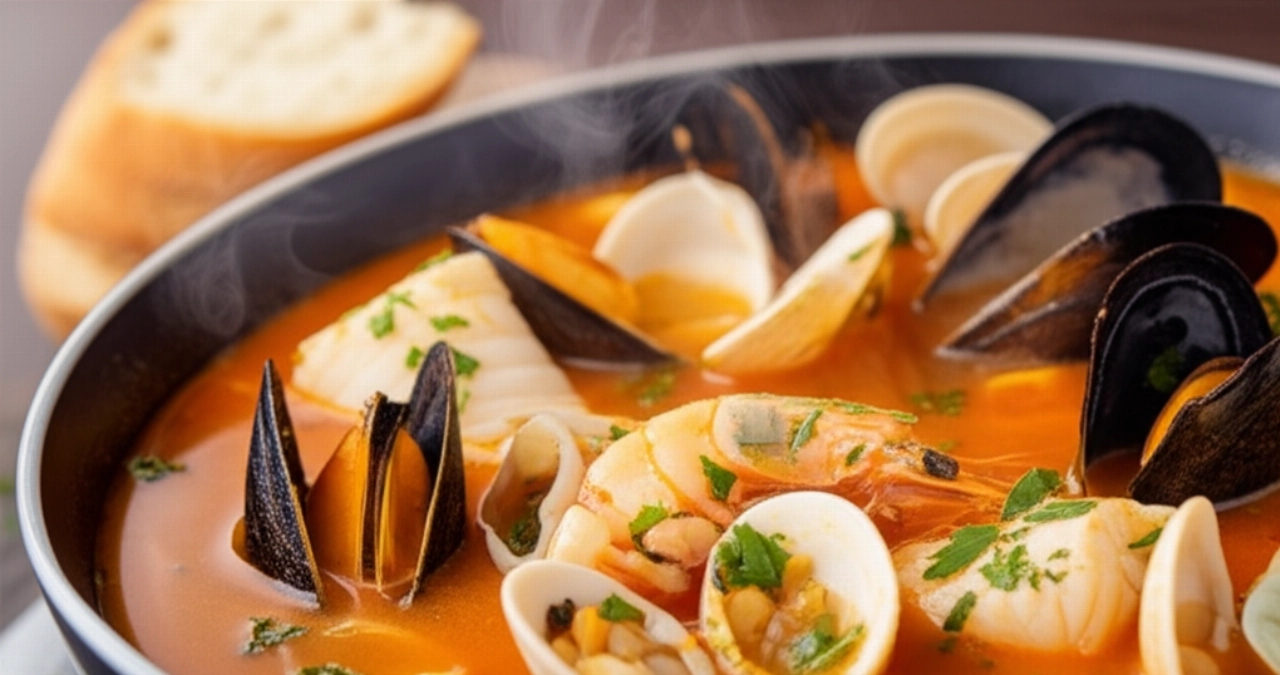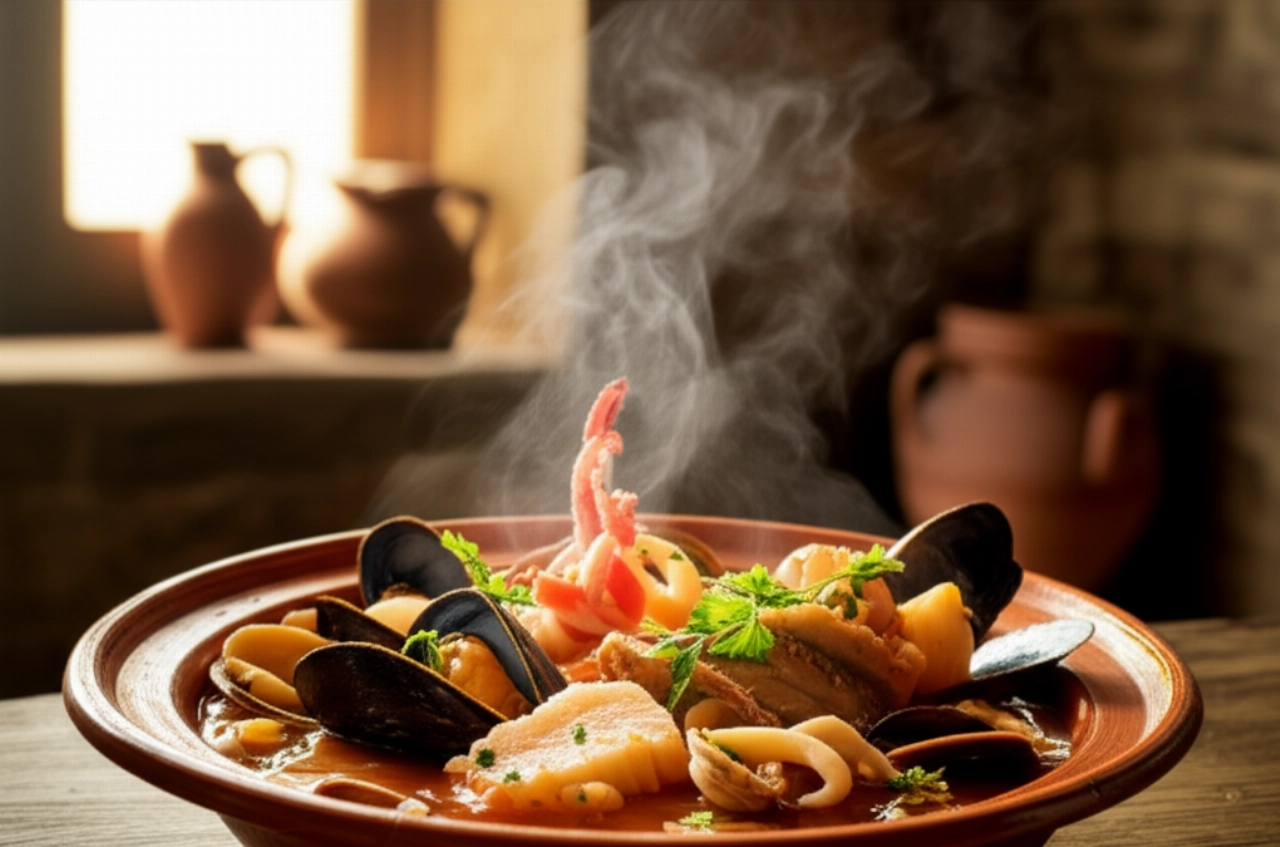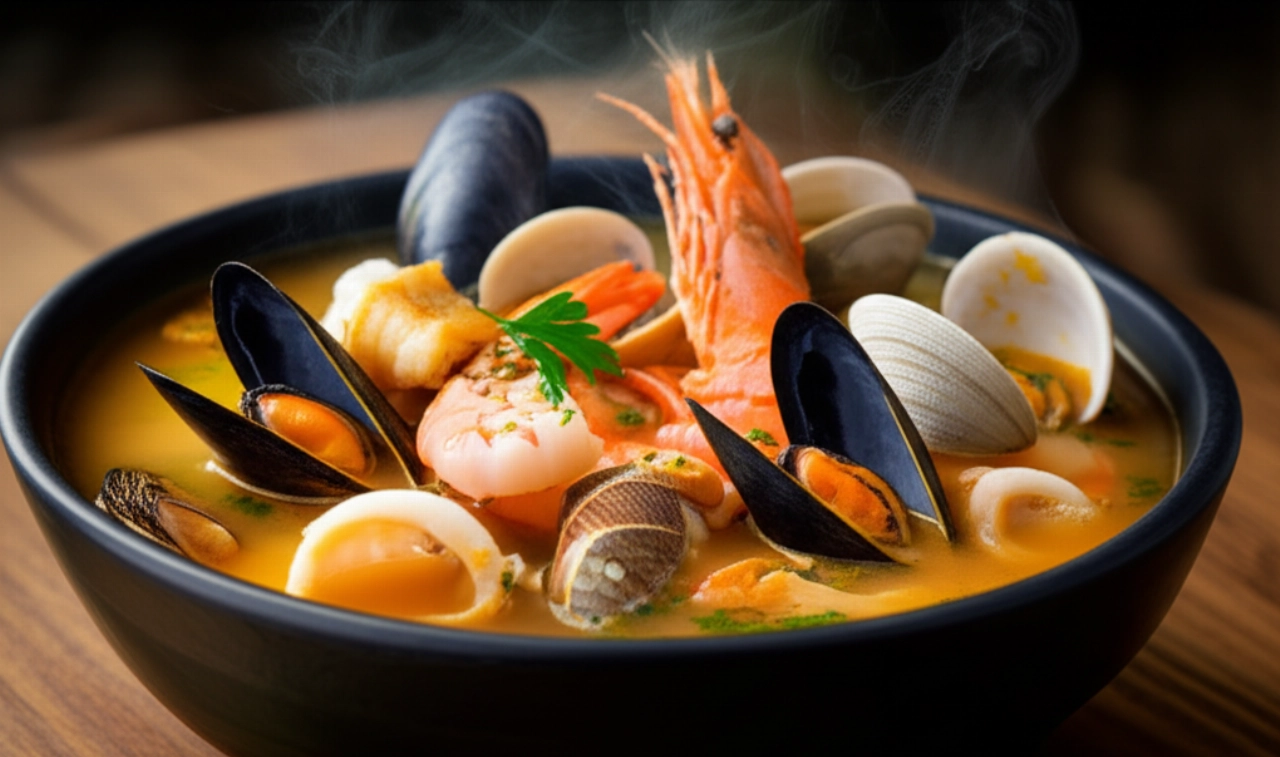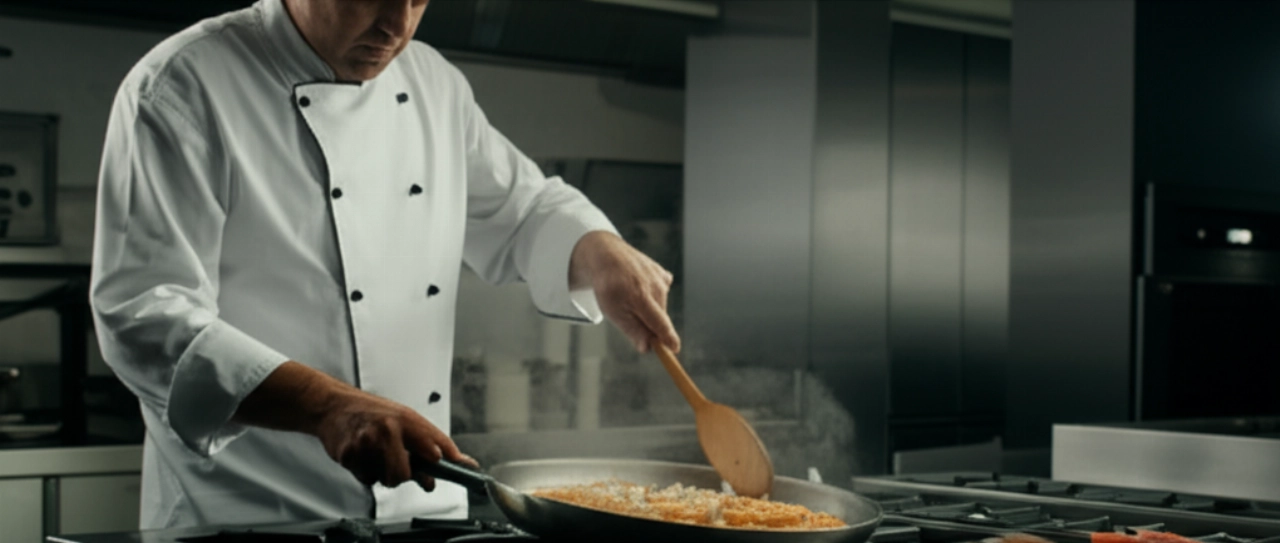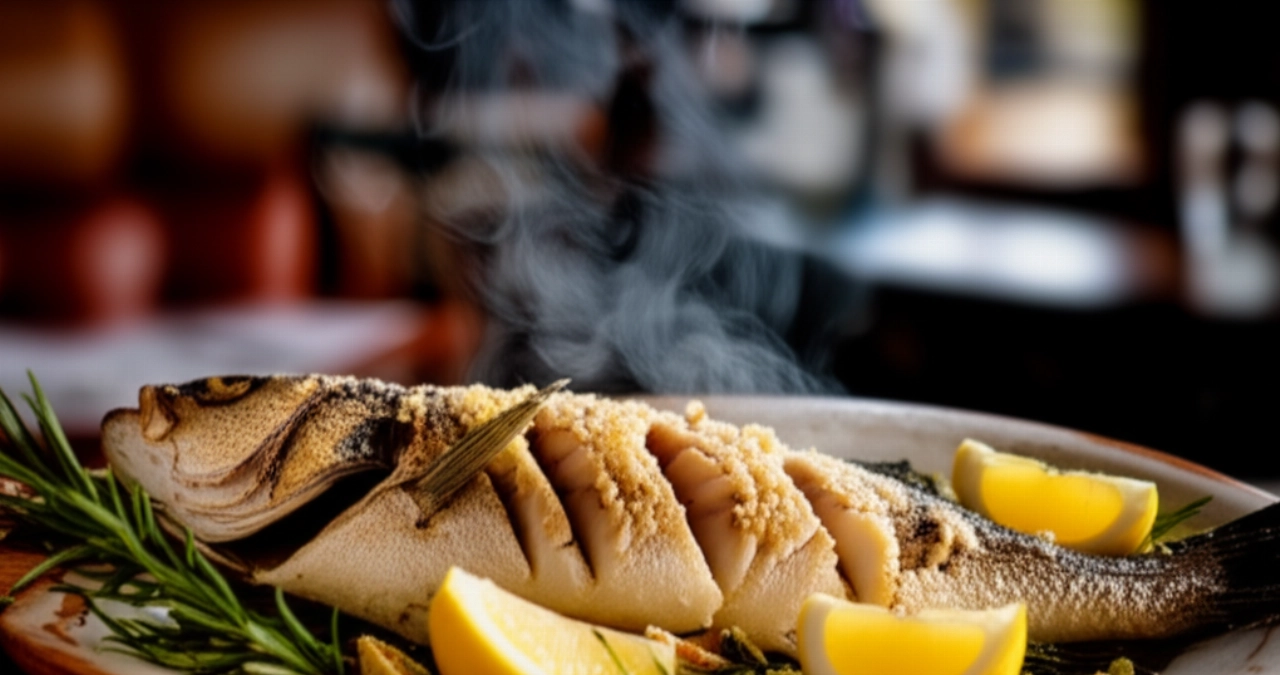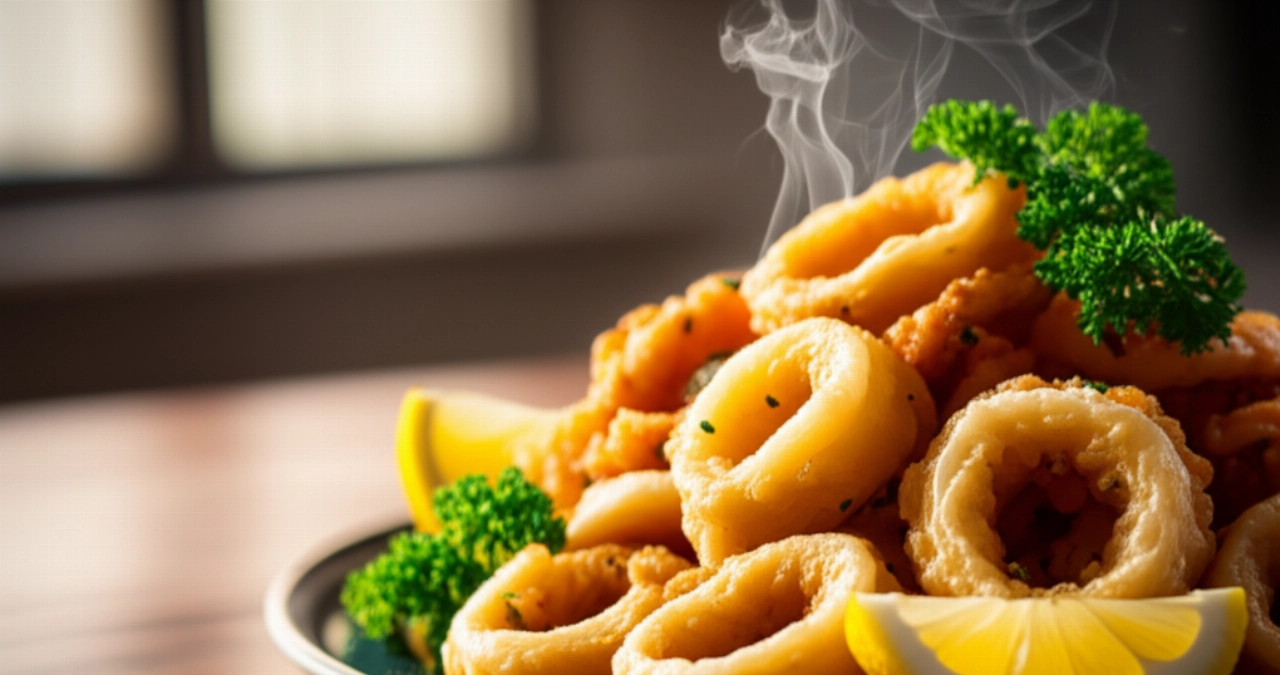Do you dream of bringing to the table a dish that smells of the sea, sun, and Sicilian traditions, a Fish Couscous so authentic and flavorful that it makes you close your eyes with every bite? Imagine the enveloping aroma of a rich broth, the melt-in-your-mouth softness of the couscous, and the freshness of freshly cooked fish. A true culinary masterpiece that tastes of home, celebration, and the Mediterranean.
Too often, however, fish couscous can seem like a daunting task: the broth isn't flavorful enough, the fish falls apart, or the couscous turns out sticky. The fear of not replicating that 'true' taste, the one you'd expect from a Sicilian grandmother, is significant. And the thought of wasting precious ingredients, like good fresh fish, can discourage even the most willing cooks.
Make yourself comfortable. Here you won't just find a list of ingredients, but a complete guide, full of secrets and practical tips, to prepare a Trapanese Fish Couscous that will make you feel like you're in Sicily with every spoonful. I'll guide you step-by-step to create a fish broth so rich and fragrant that it will be the true soul of your couscous, guaranteeing you a dish with an authentic flavor and impeccable consistency, just like you'd make it in Trapani. Success is guaranteed, and the taste... unforgettable!

Ingredients for an Authentic Fish Couscous: The Choice That Makes the Difference
The foundation of every great dish is quality ingredients. For our Fish Couscous, selection is crucial to ensure that deep, genuine flavor that distinguishes it.
- Mixed Fish for the Broth: Don't settle for just one type! Choose scorpionfish, gurnard, weever, or heads and bones of white fish (like cod or sea bream). They are what give the broth its depth of flavor.
- Fish and Seafood for the Dressing: Prawns (fresh, I insist!), squid (tender and cleaned), mussels and clams (purged perfectly). You can also add fillets of grouper or snapper to enrich it. Variety is the secret to flavor and texture!
- Couscous: Pre-cooked durum wheat semolina, medium grain. Not all semolina is the same! Look for good quality one that absorbs liquids well without becoming sticky.
- Vegetables for the Broth: Ripe cherry tomatoes (or quality tomato passata), onion, carrot, celery, parsley. They are the essential aromatic base that pairs perfectly with fish.
- Spices and Aromas: Saffron (for the unmistakable color and aroma), chili pepper (if you like a spicy note), bay leaf, and garlic. They are the soul of Trapanese couscous, don't skimp!
- Extra Virgin Olive Oil: Of excellent quality, of course. It's the common thread that binds all the flavors.

3 Common Mistakes in Fish Couscous (and How to Avoid Them)
Preparing a perfect fish couscous isn't difficult, but there are some pitfalls that can compromise the result. I'll reveal the tricks to avoid them and guarantee you a dish worthy of applause.
- Bland or Cloudy Broth: This is the most serious mistake! The broth is the beating heart of the dish.
How to avoid it: Don't just use water! Always use fresh fish heads and bones, aromatic vegetables, and cook it slowly, skimming regularly to remove impurities. Filter the broth with a fine-mesh sieve or cheesecloth to make it clear and incredibly fragrant. - Rubbery or Flaky Fish: Fish is delicate and cooks in an instant.
How to avoid it: Don't overcook the fish and seafood! Add them to the broth only at the end, for just a few minutes, just long enough for them to become tender and juicy. Prawns and squid, for example, cook in a flash. If you overcook them, they will become rubbery or fall apart. - Sticky or Dry Couscous: The consistency of the couscous is crucial.
How to avoid it: Carefully follow the proportions of couscous to broth indicated on the package (or in our recipe). After pouring in the boiling broth, cover and let it rest for the necessary time. Then, fluff it well with a fork, adding a drizzle of oil, to get separate, fluffy grains, never sticky.
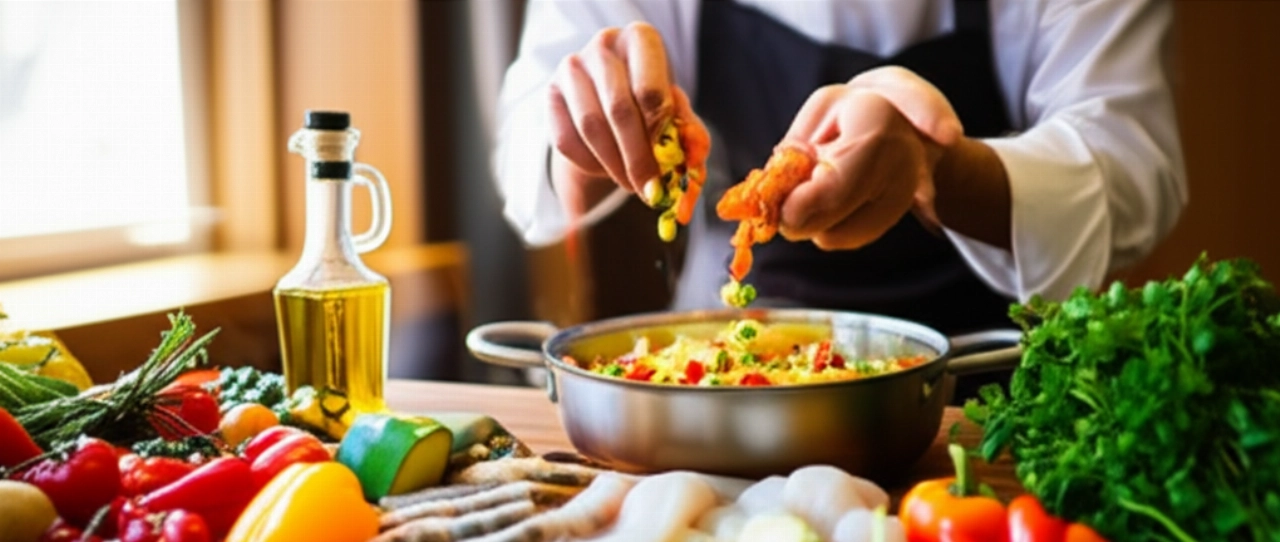
The Sicilian Grandmother's Secret: The Magic Touch for an Unmistakable Flavor
My grandmother, a true master in the kitchen, always said that the real secret of fish couscous lies not only in the ingredients but in the 'flavor of the base'. A small gesture that transforms the dish from good to unforgettable.
After filtering the fish broth, she didn't use it immediately as is. In a separate pan, she would sauté a very finely chopped onion and garlic in a drizzle of extra virgin olive oil. Then she would add a few crushed cherry tomatoes, and once the soffritto was incredibly fragrant, she would add a ladle of broth and a few pieces of filleted fish (perhaps the smaller ones or less noble parts, but always flavorful). She would let it simmer for a few minutes, creating a dense, concentrated 'sauce'. This concentrated flavor was then added to the main broth, enriching it and making it even deeper and more enveloping. A simple trick that makes all the difference, giving the couscous that aromatic complexity that few know!
Let's Prepare Fish Couscous Together: The Step-by-Step Guide
Now that you know all the secrets, let's get cooking! Follow this detailed guide, and success is guaranteed.
1. Prepare the Fish Broth (The Heart of the Dish)
- Prepare the ingredients: Clean the fish for the broth well (heads, bones, trimmings), rinse the vegetables (onion, carrot, celery, cherry tomatoes).
- Sauté: In a large pot, sauté a drizzle of oil with half an onion, one carrot, and one stalk of celery, roughly chopped. Add the fish for the broth and brown for a few minutes.
- Add water and aromatics: Cover with plenty of cold water. Add a few cherry tomatoes, a sprig of parsley, and a bay leaf. Bring to a boil, then lower the heat and let it simmer gently for at least 40-60 minutes, skimming off any impurities that rise to the surface.
- Filter the broth: Once ready, filter the broth with a fine-mesh sieve or cheesecloth, pressing the fish and vegetables well to extract all the flavor. Keep the broth warm.
2. Prepare the Fish Dressing
- Prepare the soffritto: In a large pan, sauté a clove of garlic and a bit of chili pepper (if desired) in extra virgin olive oil.
- Add the seafood: Add the squid cut into rings and the shelled prawns. Sauté for a couple of minutes. Add the well-purged mussels and clams, cover, and let them open. Discard any that don't open.
- Flavor: Add a few cherry tomatoes cut in half and a pinch of saffron dissolved in a tablespoon of hot broth. Let it flavor for a few minutes.
- Combine with the broth: Pour the fish and seafood with their juices into the hot fish broth. Adjust salt to taste.
3. Prepare the Couscous
- Measure the broth: Measure the amount of broth needed for your couscous (usually the same amount as couscous or slightly less, check the package). Bring the broth to a boil.
- Hydrate the couscous: Pour the couscous into a large bowl. Pour the boiling broth over the couscous, ensuring it covers it completely. Cover the bowl with a lid or plastic wrap and let it rest for 5-10 minutes, or according to package instructions.
- Fluff: With a fork, fluff the couscous well, separating the grains. Add a drizzle of extra virgin olive oil and continue to fluff to make it soft and light.
4. Assemble and Serve
- Combine the flavors: Pour the fluffed couscous directly into the hot broth with the fish and seafood. Gently mix to combine all ingredients.
- Let it rest: Let the fish couscous rest for a few minutes so that the flavors meld perfectly.
- Serve: Plate the hot fish couscous, garnishing with fresh chopped parsley. Prepare extra broth on the side for those who wish to add more.
Tips and Frequently Asked Questions about Fish Couscous
Here are some answers to the most common questions you might have, to clear up any doubts and guarantee an impeccable result.
Can I use frozen fish?
Yes, you can use frozen fish, but the quality of the broth and the final flavor will be superior with fresh fish. If using frozen, make sure to thaw it completely before use and rinse it well.
How can I make the broth more intense?
For an even more intense broth, you can add a tablespoon of tomato paste to the initial soffritto, or lightly toast the fish heads and bones in the oven before putting them in the pot for the broth.
Can I prepare the couscous in advance?
You can prepare the fish broth the day before and store it in the refrigerator. It's best to cook the fish and seafood just before serving. Once hydrated, couscous should be consumed fairly quickly to maintain its perfect consistency.
What other types of fish can I use?
In addition to those suggested, you can use large prawns, scampi, fillets of sea bream, sea bass, or cod. The important thing is that they are fresh and of good quality. A bit of octopus or cuttlefish cut into small pieces can also enrich the dish.
How can I store leftover couscous?
Leftover fish couscous can be stored in the refrigerator in an airtight container for a maximum of 1-2 days. You can gently reheat it in a pan with a little extra broth, or in the microwave.
A Masterpiece of Flavors That Smells of Sicily!
There you have it! Now you don't just have a recipe, but all the secrets to unlock the authentic flavors of Sicily and bring to the table a Fish Couscous that will leave everyone speechless. You've learned to create a master broth, cook fish to perfection, and achieve a soft and flavorful couscous. It's not just a dish, it's a culinary journey!
Don't be afraid to challenge yourself. Cooking is an act of love and creativity. With these tips, success is guaranteed, and applause will not be lacking. Prepare this dish and let yourself be transported by the aromas and flavors of the Mediterranean, just as if you were sitting in a trattoria in Trapani.
Have you prepared your masterpiece? We're very curious to see your Fish Couscous! Leave a comment below, tell us about your experience, or share a photo on Instagram tagging @CercaRicette.it. If you loved this recipe, don't miss our guide for a perfect Traditional Fish Soup or for a fresh side dish like Orange and Fennel Salad. Your kitchen, our passion!
